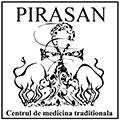Hypertension is a disease of the cardio-vascular system manifested by the abnormal rise of the blood pressure. The higher the blood pressure values are, the more pronounced the deteriorations of the cardio-vascular system and of other organs are. The diagnosis of hypertension is established by measuring the blood pressure in state of rest at least at two different time intervals.
Hypertension is a disease of the cardio-vascular system manifested by the abnormal rise of the blood pressure. The higher the blood pressure values are, the more pronounced the deteriorations of the cardio-vascular system and of other organs are. The diagnosis of hypertension is established by measuring the blood pressure in state of rest at least at two different time intervals.
The blood pressure is the force exerted by the blood upon the artery walls when circulating through the arteries. It is measured in millimeters of mercury (mm Hg) and its values are expressed by two figures (e.g., the normal values are 120/80 mm Hg for adults and 90/60 mm Hg for new born babies). The first figure is higher and it measures the systolic pressure (the blood pressure in arteries in cardiac contraction). The second one, which is lower, measures the diastolic pressure (the blood pressure in arteries in cardiac relaxation).
Hypertension is a disease of the cardio-vascular system manifested by the abnormal rise of the blood pressure. The higher the blood pressure values are, the more pronounced the deteriorations of the cardio-vascular system and of other organs are. The diagnosis of hypertension is established by measuring the blood pressure in state of rest at least at two different time intervals.
The blood pressure is the force exerted by the blood upon the artery walls when circulating through the arteries. It is measured in millimeters of mercury (mm Hg) and its values are expressed by two figures (e.g., the normal values are 120/80 mm Hg for adults and 90/60 mm Hg for new born babies). The first figure is higher and it measures the systolic pressure (the blood pressure in arteries in cardiac contraction). The second one, which is lower, measures the diastolic pressure (the blood pressure in arteries in cardiac relaxation).
The diagnosis of hypertension is established when the systolic pressure exceeds 140 mmHg constantly and the diastolic one 90 mm Hg. Pre-hypertension is the stage where the blood pressure values ranges between 120-139/ 80-89 mm Hg. The persons whose blood pressure rises over 200/120 mm Hg are medical emergencies. The diabetic persons pose a higher risk of cardiac diseases; therefore the blood pressure treatment will be administered if the blood pressure exceeds 130/80 mm Hg.
Manifestations
The rise of blood pressure causes major disorders in the body, being accompanied by specific manifestations: headache, vision disorders, noise or tinnitus, arrhythmia, chest pains, nose bleeding, confusion, dizziness, fatigue.
Causes
Primary hypertension, of idiopathic nature, is the most frequent form. Secondary hypertension is caused by renal diseases, neuro-endocrine dysfunctions and disorders, obesity, aorta coarctation, anxiety, stress, contraception hormonal medication, alcohol abuse, cocaine consumption. Other causes for hypertension are the cardiac dysfunctions forcing the heart to pump the blood with higher power or arteriosclerosis (artery thickening, hardening and loss of elasticity).
Treatment
In order to maintain the blood pressure within normal limits, the organs-thesaurus (that is liver, spleen – pancreas, lungs, kidneys, heart) have to work perfectly. These organs maintain and regulate the activity of the cardiovascular system (blood, arteries and veins). The liver and the spleen – the pancreas regulate the blood fluidity and coordinate the areas of blood irrigation. The lungs and the heart assure the optimum function of the small blood circuit and, in its turn, the small blood circuit helps with the proper function of the big blood circuit. By the secretion of angiotensin, the kidneys assure the return of the blood to the heart and establish the degree of arterial and venous elasticity.
The existence of a chronic disease in one of these organs will create a favorable context for hypertension. Therefore its treatment requires identification of the triggering causes, assessment of the degree to which the cardio-vascular system is affected and treatment of the morpho-functional alterations.

